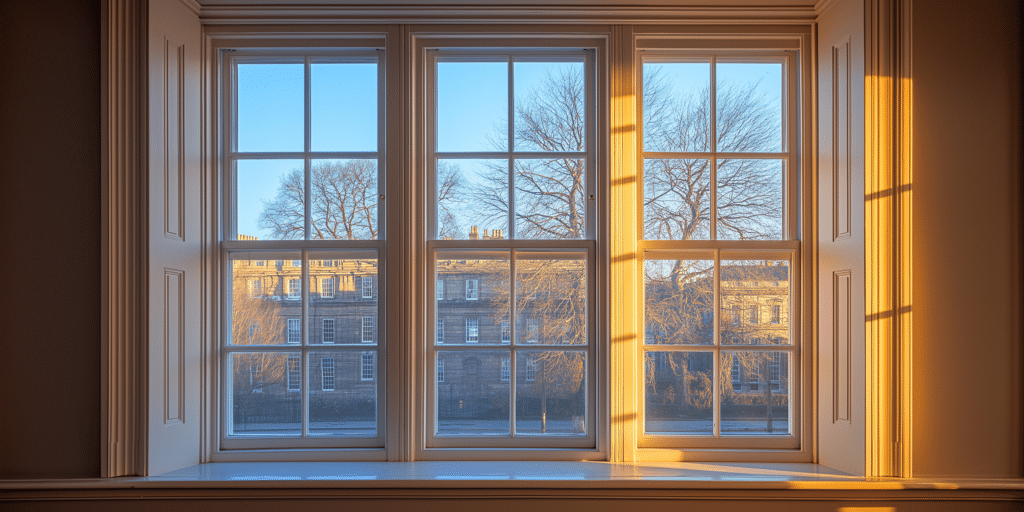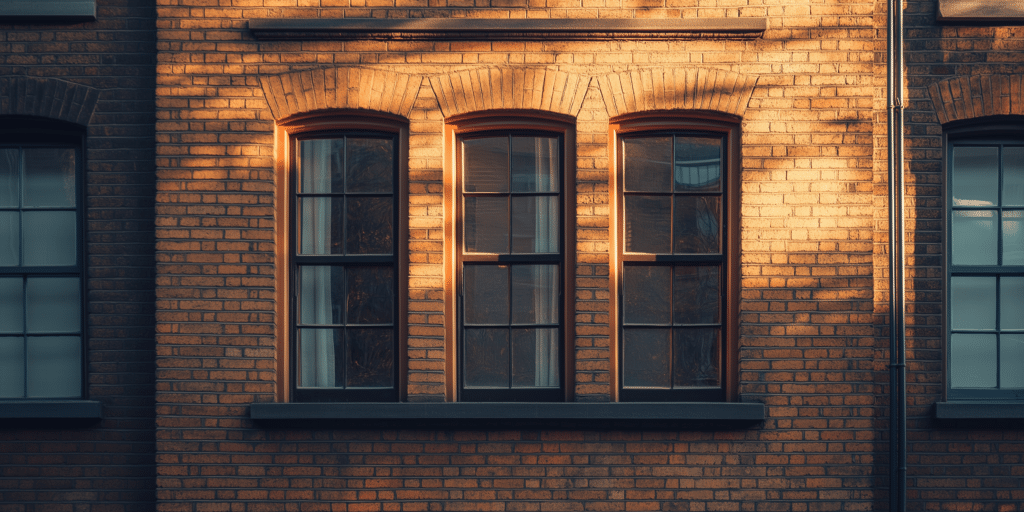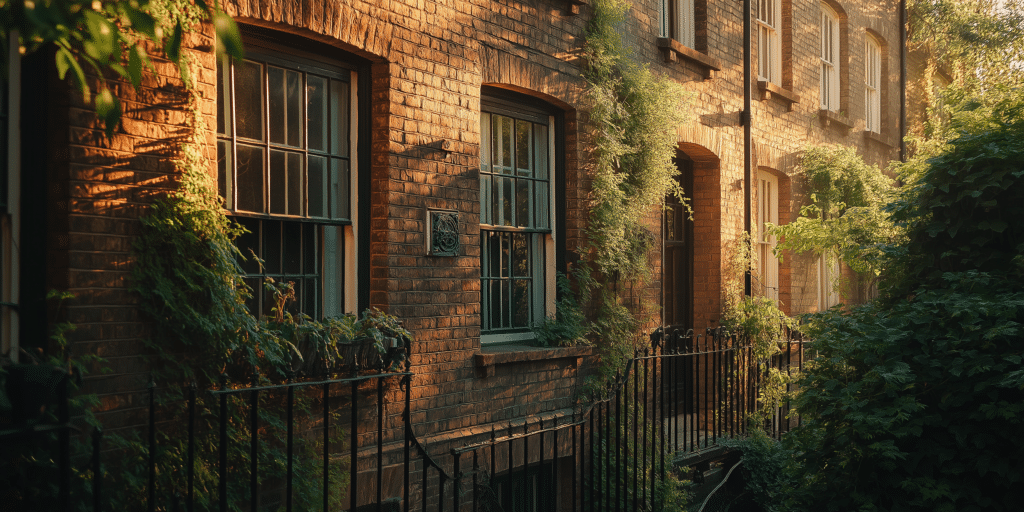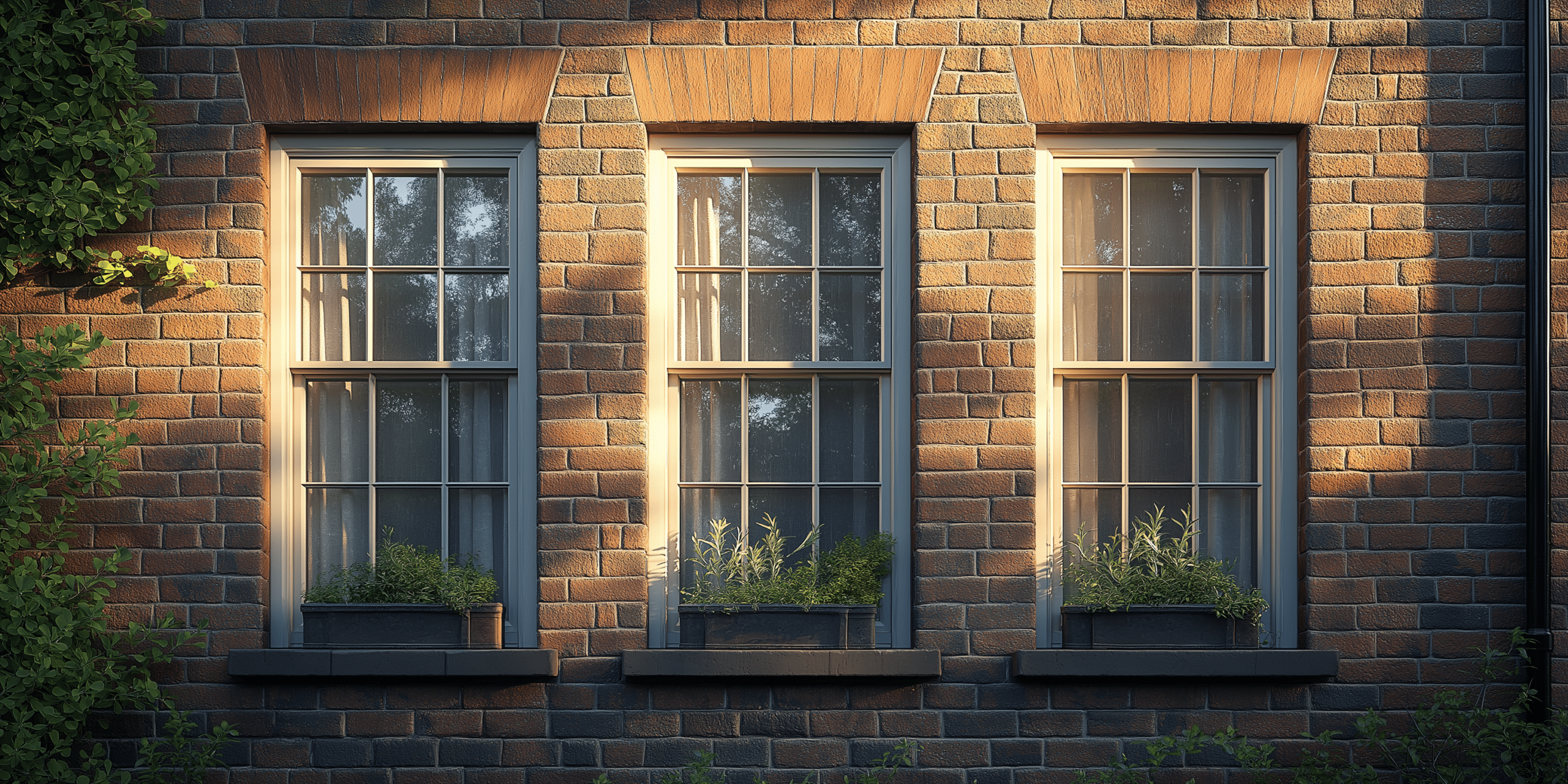What Is Sash Lining and Why Is It Important?

Sash lining is a specialised protective layer typically applied to a sash window’s frame or components. It protects against weathering, temperature fluctuations, and physical wear. Sash linings help divide and support panes to reduce energy leakage. This lining acts as an insulation barrier, increasing thermal efficiency while preserving the integrity of your window’s frame.
- Functional Purpose: Sash lining offers increased thermal efficiency by reducing heat loss through the window frames, which is often a significant concern in older sash windows. Recent studies show that quality linings can improve insulation by up to 20%, making a noticeable difference in energy bills for period homes.
- Aesthetic Appeal: Homeowners often prefer sash lining to maintain the period authenticity of traditional sash windows while offering a smoother, cleaner finish. Custom linings can be matched with historical profiles, maintaining heritage appeal while adding functionality.
- Increased Longevity: Wood rot in untreated sash windows can lead to up to 15% faster degradation without proper lining protection.
- Noise Reduction: For urban properties, sash lining can reduce noise infiltration by as much as 50%, providing a quieter and more comfortable indoor space, particularly valuable in busy city environments.
Why Choose Sash Lining for Your Windows?
When weighing the advantages of sash lining, it’s essential to consider both immediate and long-term benefits. The National Trust for Historic Preservation highlights that sash linings provide improved insulation and protect historically valuable materials from deteriorating. Here’s why many property owners and preservation specialists find sash lining indispensable.
- Energy Efficiency: Building performance experts say a well-installed sash lining can reduce heat transfer through sash windows by up to 15%. This makes sash lining a practical investment for those saving on heating and cooling costs.
- Enhanced Durability: The sash lining protects against UV exposure, moisture damage, and temperature fluctuations, which significantly extends the lifespan of traditional sash windows.
- Eco-Friendly Considerations: Many sash lining materials are now manufactured from sustainable sources, with options like FSC-certified wood and recyclable uPVC, appealing to eco-conscious consumers looking to reduce environmental impact.
- Noise Dampening: This extra insulation layer adds soundproofing benefits, an essential consideration for homes near traffic or urban areas, where noise reduction can improve quality of life by as much as 50%.
Choosing the Best Material for Sash Lining
Which material is best for your sash lining? Your choice will impact insulation effectiveness and the look and feel of the windows. It’s essential to balance material durability with aesthetics.
- Wood: The traditional choice for sash windows, wood offers a timeless look. Oak, for example, has been used for centuries due to its durability and aesthetic, while softwoods like pine remain popular for affordability.
- uPVC: Known for durability and low maintenance, uPVC provides weather resistance and can effectively reduce draughts. It has been reported to cut annual energy costs by up to 18% in colder climates.
- Composite Materials: These materials offer durability and thermal efficiency, blending natural aesthetics with modern performance. A study from the British Window Association indicates that composite linings can increase thermal performance by up to 30%.
Step-by-Step Guide to Sash Lining Installation

Below is a guide for sash lining installation. While simple installations may be manageable DIY projects, professional help is recommended for heritage properties. Getting the fitting right is crucial, as poor fitting leads to loss of insulation and draught issues.
- Preparation and Tools: Gather essential tools, such as a utility knife, measuring tape, adhesive, sandpaper, and caulking gun.
- Frame Preparation: Clean and sand surfaces thoroughly. A clean surface is essential for adhesive effectiveness and ensures that the sash lining stays secure and airtight.
- Applying the Lining: Measure precisely and apply the adhesive evenly. Use double measurements to avoid gaps.
- Final Adjustments and Sealing: Seal edges to prevent moisture ingress. If not properly sealed, this can cause wood swelling and lead to frame misalignment.
Maintenance Tips to Extend the Life of Your Sash Lining
Once installed, regular maintenance ensures the sash lining’s longevity. “Routine checks can add years to sash lining life, especially if exposed to harsh weather,” says an industry professional from Historic England.
- Routine Inspections: Conduct semi-annual inspections for peeling or gaps, addressing them promptly to prevent insulation loss.
- Cleaning: Avoid abrasive cleaners; opt for mild solutions to maintain the integrity of softer materials like wood.
- Weather-Related Care: Adjust care based on season. In winter, ensure sealants are intact to reduce draughts; check for UV degradation in summer.
- Minor Repairs: Reapply adhesive to worn areas and sand small sections to maintain a seamless look.
Comparing Traditional vs. Modern Sash Lining Materials
Is traditional always better, or do modern materials offer advantages? This comparison helps property owners make informed choices based on maintenance demands, durability, visual appeal, and eco-impact. “In conservation projects, maintaining original materials where possible is critical for authenticity,” notes a spokesperson from Historic England. However, modern materials can offer durability without compromising appearance, making them viable for energy efficiency.
- Visual Differences: While wood remains the standard for a classic aesthetic, modern alternatives, like uPVC and composite, can replicate wood’s appearance with the added advantage of durability and lower maintenance requirements.
- Maintenance Demands: Wooden sash linings may need regular treatment, such as sanding and repainting, to prevent rot, whereas composite and uPVC linings are more resistant to common wear issues.
- Eco-Impact: Studies by the British Woodworking Federation indicate that responsibly sourced timber is highly sustainable. Meanwhile, uPVC and composite linings have a higher environmental footprint, though some composites now incorporate recycled materials.
- Durability: uPVC and composites often withstand harsh weather better than untreated wood, making them suitable for properties in challenging climates. According to industry research, composite materials like fibreglass are reported to have a lifespan of 50 years, compared to untreated wood, which is around 30 years.
Eco-Friendly and Sustainable Sash Lining Options

If sustainability is a priority, there are sash-lining options aligned with eco-conscious building principles. As the National Trust highlights, “Eco-conscious materials reduce environmental impact and support the longevity of historical restorations.”
- Eco-Conscious Materials: FSC-certified wood and bamboo are increasingly popular. Bamboo is known for its rapid renewability and durability, and the Environmental Protection Agency recommends bamboo products for their low environmental impact.
- Sustainable Practices: Precise cutting and fitting techniques can reduce material waste, enhancing eco-friendliness. Reclaimed wood is also popular in heritage conservation due to its natural patina and structural integrity.
- Durability and Eco-Benefits: Long-lasting materials like composite wood and thermally efficient uPVC reduce replacement frequency, contributing to sustainability by minimising material production demands.
- Environmental Certifications: Materials certified by FSC or PEFC ensure they come from responsibly managed forests, helping consumers make eco-friendly choices.
Common Mistakes to Avoid When Installing Sash Lining
What are some common pitfalls to avoid? Accurate measurements and quality material choices can enhance the functionality and appearance of your sash windows. Precise installation is key to maximising insulation and durability.
- Inaccurate Measurements: Using digital callipers for precise measurements can ensure a snug fit, minimising draughts and improving overall insulation.
- Choosing Low-Quality Materials: Avoiding inferior materials can prevent premature wear, ensure better insulation, and extend the lifespan. Professionals suggest opting for higher-grade timber or composite for long-lasting results.
- Poor Adhesion Techniques: Experts recommend using adhesive products specifically designed for outdoor use, as indoor adhesives are more prone to degradation when exposed to elements.
- Neglecting Maintenance: Routine inspections twice yearly help catch issues early, with many professionals suggesting an additional inspection before and after winter to address potential damage caused by harsh conditions.
Expert Recommendations for Sash Lining
Industry professionals provide invaluable advice on achieving long-lasting, quality sash lining results. These tips cover the essentials of investing in quality materials and considering the local climate. Building Conservation says, “Using high-quality sash lining materials can prolong the lifespan of original windows, which is critical for heritage properties.”
- Invest in Quality Materials: Though more costly, high-quality sash lining materials reduce maintenance and enhance window longevity. The National Trust advises selecting durable materials that align with building conservation standards.
- Hire Professionals for Complex Installations: Historical buildings benefit from professional installation, ensuring precise fitting and preservation of the building’s architectural value.
- Use High-Grade Adhesive: The correct adhesive is crucial, with experts recommending products designed specifically for outdoor window installations for increased longevity.
- Consider Climate: For regions with high humidity or coastal exposure, composite or treated hardwood may offer better durability than untreated wood.
Troubleshooting Common Sash Lining Issues

Are you encountering problems with your sash lining? As experts in sash window restoration reported, here’s a troubleshooting guide to address common issues effectively.
- Peeling Adhesive: Caused by inadequate preparation or poor adhesive choice, peeling can be fixed by thoroughly cleaning and sanding surfaces before reapplying with a strong adhesive.
- Mould and Mildew: In humid climates, ventilation combined with anti-mould sealants can prevent mildew, preserving the window’s integrity and appearance.
- Warping or Shrinking: Annual application of weather-resistant sealant can mitigate wood expansion and contraction caused by seasonal changes, maintaining frame alignment.
- Insufficient Soundproofing: Consider a thicker lining material for better sound reduction, particularly in noisy urban settings.
Final Thoughts on Choosing and Maintaining Sash Lining
Sash lining is a valuable addition for anyone looking to improve the performance and longevity of their sash windows. With the right material, installation techniques, and maintenance, it offers enhanced insulation, noise reduction, and aesthetic appeal. Proper research and professional guidance ensure that your sash lining project achieves functional and aesthetic goals, boosting property value and energy efficiency. High-quality sash lining preserves window function and adds substantial value to traditional properties by preserving their unique character.




